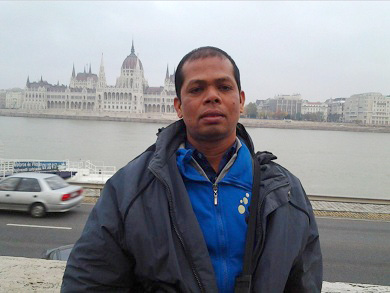The Conception of Restorative Justice in Actualization of the Indonesian Criminal Justice System
Abstract
The purpose of this study is to study and analyze the actualization of restorative justice in the Indonesian criminal justice system. In this writing, the author uses normative juridical methods with research specifications in the form of descriptive analysis. Based on the discussion of the weaknesses of the Indonesian criminal justice system, the criminal justice system tends to be emotional in punishing perpetrators. An overly positivist understanding places the law as an absolute rule in order to achieve legal certainty and disregard the expediency and justice of the law for perpetrators and victims of a criminal justice legal system that tends to override the rights of defendants or suspects and victims. Restorative justice is a way of resolving cases through legal processes outside the courts that aim to achieve justice that emphasizes the recovery of the condition of the perpetrator and victim. Recovery is defined as recovery to the victim as well as the perpetrator. So what is restored is not just the victim. The position of restorative justice in Indonesia is strictly regulated in various laws and regulations such as the 1945 Constitution of the Republic of Indonesia; Law Number 48 of 2009 concerning Judicial Power, Law Number 14 of 1985 as amended by Law Number 5 of 2004 as last amended by Law Number 3 of 2009 concerning the Supreme Court.
Keywords
Full Text:
PDFReferences
Abidin, H. Zamhari. (1996). Pengertian dan Asas Hukum Pidana, Ghalia Indonesia, Jakarta.
Aertsen, Ivo. (2011). Restorative Justice and The Active Victim: Exploring the Concept of Empowerment, TEMIDA Journal, str 5-9, ISSN: 1450-6637 DOI 10.2298/TEM 1101005A Pregledni Rad.
Garner, Bryan A. (2004). Black’s Law Dictionary. Edisi Delapan, West Publishing CO, Amerika Serikat.
Herlina, Apong. (2004). Perlindungan Terhadap Anak Yang Berhadapan Dengan Hukum. PT. Raja Grafindo Persada, Jakarta.
Husna, Cut Asmaul. (2012). Penemuan dan Pembentukan Hukum "The Living Law" Melalui Putusan Hakim. Mizan, 2:3.
Kusriyah, Sumaryono and Sri. (2020). The Criminal Enforcement of the Fraud Mode of Multiple Money (Case study Decision No.61 / Pid.B / 2019 / PN.Blora). Jurnal Daulat Hukum, 3:1.
Marlina. (2010). Pengantar Konsep Diversi dan Restorative Justice dalam Hukum Pidana, Medan: USU Press.
Muladi. (1996). Kapita Selekta Sistem Peradilan Pidana. Badan Penerbit UNDIP, Semarang.
Pratiwi, P.F.P., Suprayitno, and Triyani. (2020). Existence of Customary Law through Comparative Education between Dayak Ngaju Customary Law and National Law. Budapest International Research and Critics Institute-Journal (BIRCI-Journal) Vol 3 (2): 712-717.
Priyatno, Dwidja. (2007). Pemidanaan untuk Anak dalam Konsep Rancangan KUHP (dalam Kerangka Restorative Justice). Lembaga Advokasi Hak Anak (LAHA), Bandung, 8:3.
Purba, I.G., and Syahrin, A. (2019). Demand against Law and Using Authority in Corruption Criminal Action. Budapest International Research and Critics Institute-Journal (BIRCI-Journal) Vol 2 (4): 194-206.
Reksodiputro, Mardjono. (2007). Bunga Rampai Permasalahan dalam Sistem Peradilan Pidana (buku kelima), Pusat Pelayanan Keadilan dan Pengabdian Hukum UI. Jakarta.
Rizky, Rudi. (2008). Refleksi Dinamika Hukum (Rangkaian Pemikiran dalam Dekade Terakhir). Perum Percetakan Negara Indonesia, Jakarta.
Soemitro, Rony Hanitijo. (1990). Metodologi Penelitian Hukum dan Jurimetri. Ghalia Indonesia, Jakarta.
Tumanggor, F., Muazzul, and Zulyadi, R. (2019). Handling of Narcotics Child Victims in Child Special Coaching Institutions Class I Tanjung Gusta, Medan. Budapest International Research and Critics Institute-Journal (BIRCI-Journal) Vol 2 (4): 50-55.
UNODC. (2006). Handbook on Restorative Justice Programmes. Criminal Justice Handbook Series, UN New York, Vienna.
DOI: https://doi.org/10.33258/birci.v5i3.6649
Article Metrics
Abstract view : 24 timesPDF - 13 times
Refbacks
- There are currently no refbacks.

This work is licensed under a Creative Commons Attribution-ShareAlike 4.0 International License.

This work is licensed under a Creative Commons Attribution-ShareAlike 4.0 International License.

_.gif)

















_.gif)



